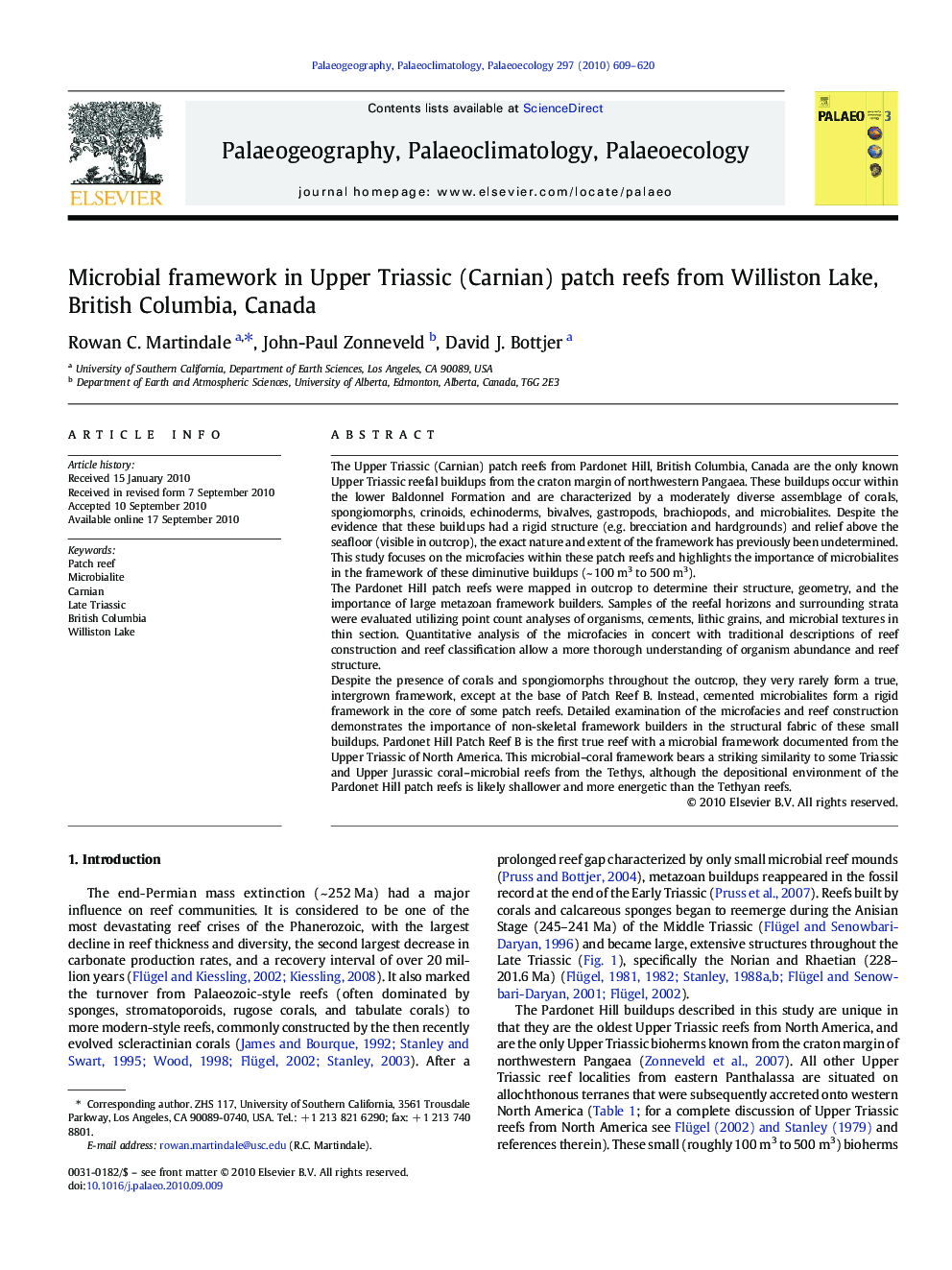| Article ID | Journal | Published Year | Pages | File Type |
|---|---|---|---|---|
| 4467461 | Palaeogeography, Palaeoclimatology, Palaeoecology | 2010 | 12 Pages |
The Upper Triassic (Carnian) patch reefs from Pardonet Hill, British Columbia, Canada are the only known Upper Triassic reefal buildups from the craton margin of northwestern Pangaea. These buildups occur within the lower Baldonnel Formation and are characterized by a moderately diverse assemblage of corals, spongiomorphs, crinoids, echinoderms, bivalves, gastropods, brachiopods, and microbialites. Despite the evidence that these buildups had a rigid structure (e.g. brecciation and hardgrounds) and relief above the seafloor (visible in outcrop), the exact nature and extent of the framework has previously been undetermined. This study focuses on the microfacies within these patch reefs and highlights the importance of microbialites in the framework of these diminutive buildups (~ 100 m3 to 500 m3).The Pardonet Hill patch reefs were mapped in outcrop to determine their structure, geometry, and the importance of large metazoan framework builders. Samples of the reefal horizons and surrounding strata were evaluated utilizing point count analyses of organisms, cements, lithic grains, and microbial textures in thin section. Quantitative analysis of the microfacies in concert with traditional descriptions of reef construction and reef classification allow a more thorough understanding of organism abundance and reef structure.Despite the presence of corals and spongiomorphs throughout the outcrop, they very rarely form a true, intergrown framework, except at the base of Patch Reef B. Instead, cemented microbialites form a rigid framework in the core of some patch reefs. Detailed examination of the microfacies and reef construction demonstrates the importance of non-skeletal framework builders in the structural fabric of these small buildups. Pardonet Hill Patch Reef B is the first true reef with a microbial framework documented from the Upper Triassic of North America. This microbial–coral framework bears a striking similarity to some Triassic and Upper Jurassic coral–microbial reefs from the Tethys, although the depositional environment of the Pardonet Hill patch reefs is likely shallower and more energetic than the Tethyan reefs.
